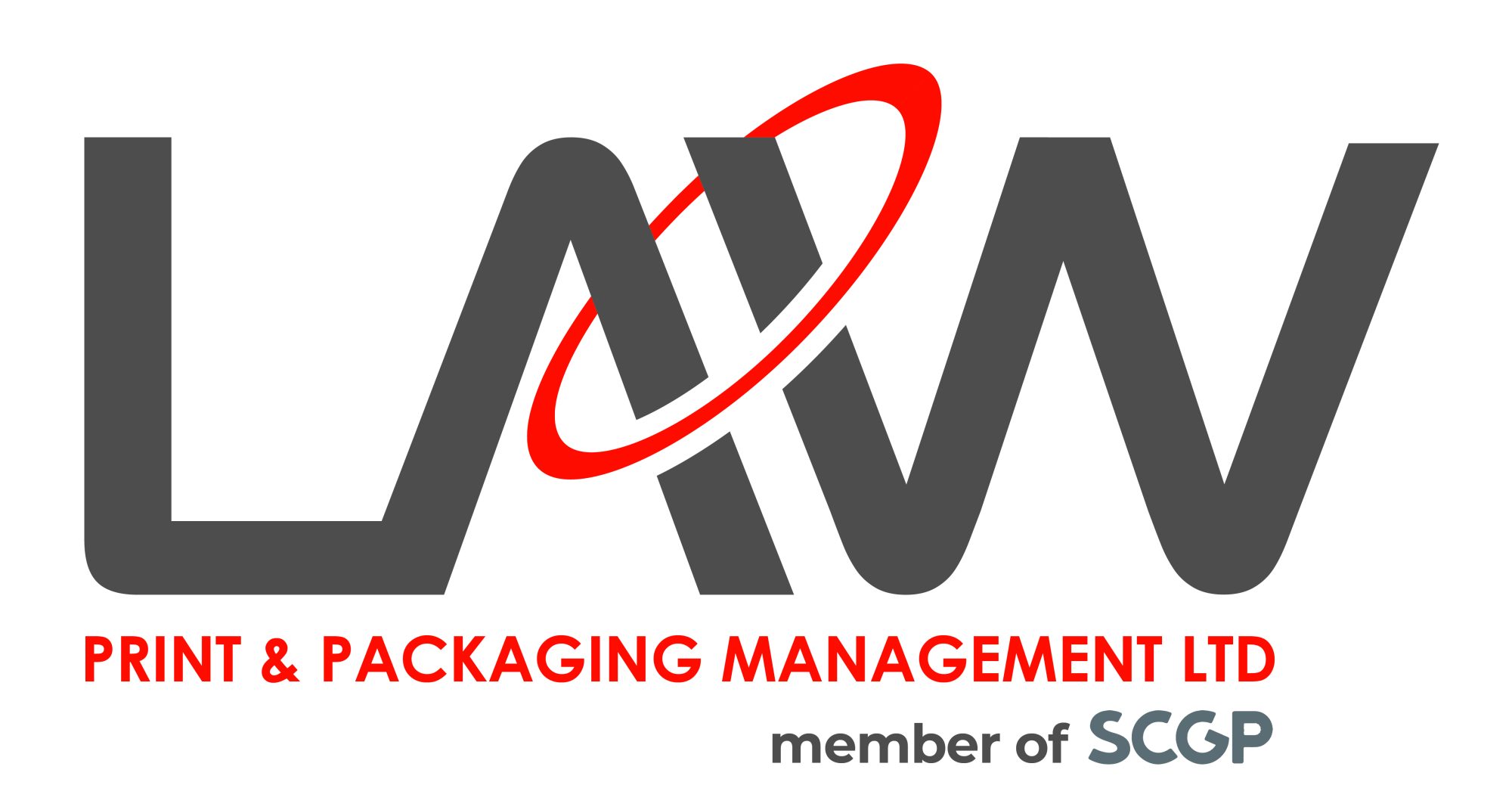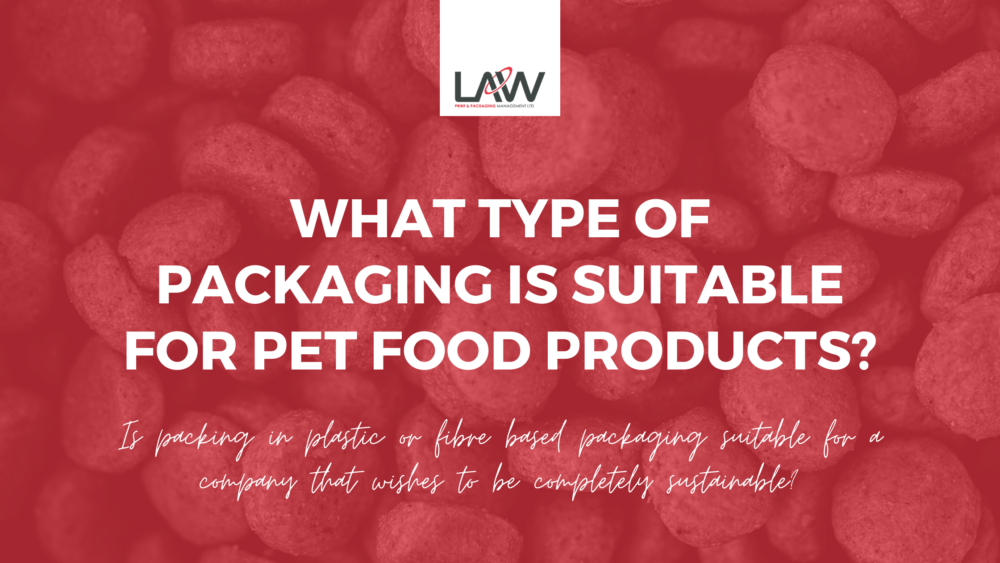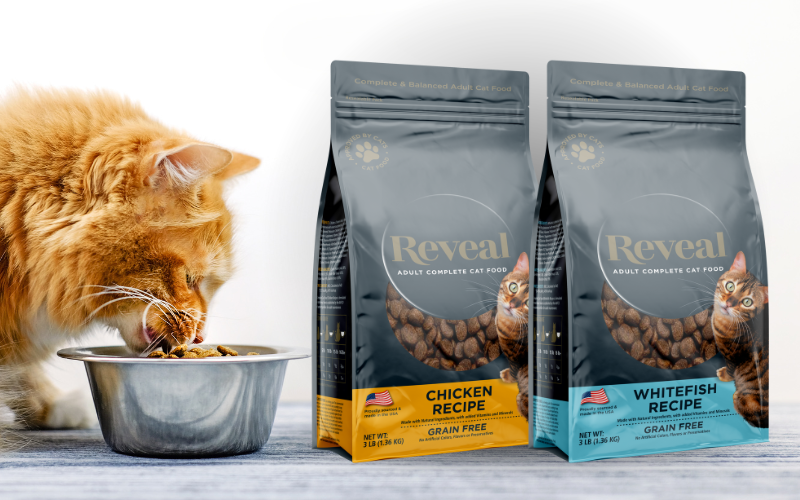As experts in our field, Law Print frequently get asked a lot of questions around pet food packaging. What pack formats are available, what are the best materials to use, and in particular what packaging solutions are the most sustainable?
Brands and retailers desire to meet the expectations from their end consumers and pet parents have become increasingly savvy about the quality of the product they want to feed their beloved family member and how sustainable the entire product should be. However, we clearly know that it is not that simple to ensure, as ultimately pet food packaging must serve its purpose – it needs to protect the kibble or treats contained within and there are key factors that cannot be ignored, most importantly shelf life of the product and transit requirements.
The issue that we often encounter though is the fact that buyers and pet owners are very confused about the claims made on packaging, about the differences between compostable, biodegradable and recyclable packaging, and what it actually really means. This blog is to highlight our thoughts on this and inform existing and potential customers, whether packing in plastic or fibre based packaging is suitable for a company that wishes to be completely sustainable, are there any alternatives to multi-layered packaging and are mono material products the solution we are all aiming for.
What are the main requirements for pet food packaging?
So many customers are now asking for support to enhance the sustainability of the packaging they use, and too often, they will jump on the bandwagon of a new material trends or move suppliers for packaging alternatives that are not in fact suitable to their products. Brands and retailers should ask themselves what do they need for their products to ensure palatability, safety and presentation, and not just be driven by what they think their consumers want.
At the very start of any new pet food project, the packaging always becomes one of the most important elements of the equation for success and, for the brand, it is really important to get it right first time. But before making a choice based on marketing strategies only, these are the first questions you should ask yourself:

Pet parents will always have the same expectations when buying pet food – it must look fresh, smell nice and taste good. You cannot achieve this if your packaging doesn’t give you the extended shelf-life that is required for pet products today, usually a minimum 12-18 months from the packing date. Only suitable packaging will protect the integrity and palatability of the food. If you think about it, pet food is mostly made of fat, starch and protein. It is therefore extremely sensitive to oxygen and moisture. If your pet food packaging doesn’t give you the necessary barrier properties, you will not be able to control oxidation and mould.
Are paper bags suitable for pet food?
Pure paper bags are best suited for dry foods that have little or low barrier requirements, especially oxygen. Paper bags are simply folded and glued, the construction does not allow for an “airtight’ package.
There are also a lot of misconceptions surrounding paper packaging and whether it actually is sustainable.
When choosing a paper bag for pet food, the reality is that, in all cases, paper bags need to be coated in plastic or polymer to make them suitable for packing pet food. How much plastic and the type of plastic can’t be determined until customers relay the type of food they’re looking to pack. However, when pet food is packed in paper bags, it often needs an inner layer or coating to protect the outer bag from grease and to keep the food fresher. It also enables the bags to be heat-sealed after packing.
Normally “paper bags” end up like a multi-layered plastic bag to achieve the desired performance, and unfortunately, very difficult to recycle.
Are there any benefits to packing pet food in compostable or biodegradable bags?
Compostable packaging is usually made of paper and other materials that claim to be suitable for composting in a compost heap and return to the earth within a short period of time. The reality however is that these bags are only industrially compostable as they need to meet certain environmental factors – high temperature and humidity, before the materials start to decompose.
Biodegradable packaging is using materials such as paper and bioplastics, which are derived from renewable plant materials like corn or potato starch. Bags would decompose naturally in the environment over a longer period of time. The makeup structure of biodegradable plastics makes them more easily break down by natural microorganisms.
As such, biodegradable plastics are perceived to be more eco-friendly but still comes with its downside. Biodegradable plastics are made from plants such as soybeans and corn. Therefore, there is a risk of soil contamination as the crops are typically treated with pesticides.
Compostable and biodegradable bags both come with disadvantages as they are not designed to perform and keep your products fresh longer. You need to consider that the biodegradation process is not something that can be switched on or off. The process begins when the product is produced, therefore it is essential to know exactly for how long the biodegradable / compostable material will retain its protective properties.
For example, most datasheets for PLA (Polylactic acid) film state clearly that it should be used within 6 months of manufacture. This is a very short period when you consider the processes involved and the shelf-life requirements. You would probably need to fill all the bags and sell them in a very short time frame to meet the manufacturer’s guidelines.
This is possible for fresh produce which this material was designed to pack, but not possible for oily, fatty or moist products like pet food that require a long shelf-life.
Of course, customers can choose compostable or biodegradable options but these are not recyclable. Plastic packaging is, as you can re-use or recycle it at the end of life. Plastic bags can be repurposed into something new.
Are mono material solutions the answer to non-recyclable multi-layered packaging?
Brands and retailers are under pressure to reduce or eliminate the use of single use plastics, including current multi-layered bags widely used for pet food packaging.
In the last 5 years, packaging suppliers have worked really hard to develop new solutions looking at both single plastic and mono material packaging.
At Law Print, we launched our Ready2Recycle range of PE/PE and PP/PP mono material structures back in January 2019, favouring the single polymer structure to offer sustainable solutions to our customers, whilst maintaining similar barrier properties and integrating the same features such as zippers and Aplix reclosure systems.
Mono material packaging is recyclable as made of the same material, either polyethylene (PE) or polypropylene (PP). We can offer PE/PE pouches, flat bottom and quad seal bags, as well as BOPP/PP woven bags.
What do the OPRL guidelines say?
The On Pack Recycling Label (OPRL) scheme in the UK favours a recyclable approach at the moment rather than a biodegradable / compostable approach.
OPRL supports the UK’s largest retail and manufacturing organisations with the view that PE and PP mono material packaging is the way forward in terms of recycling.
Most retailers and supermarkets are encouraging their food and pet food suppliers to consider single polymer solutions rather than bioplastics.
Wherever possible, pet food brands have moved to PE/PE bags but in some cases standard duplex or triplex packaging is still used to meet the product requirements.
What are pet food manufacturers saying?
Pet food manufacturers have also experienced an increased demand for sustainable packaging, especially for own label products that they make for various brands.
They know first-hand what affects pet food and how it should be packed. Even dry pet food requires certain barrier properties to preserve the freshness, nutrients and vitamins of the recipes.
Brands that also want to export to other markets must consider carefully how the packaging will protect their product in transit, how it will be distributed until it reaches the shelves of the retailers and how it will be stored the whole time. These are factors that will be totally out of the pet food manufacturer’s hands and are often overlooked to please the end consumers or achieve what is perceived as a more sustainable brand image, to the detriment of product quality which could lead to food waste.
We have asked GA Pet Food Partners, one of the largest pet food producers in the industry, to tell us what they think of the current race to sustainability, the challenges they are faced with and the requirements from their customers.
There is a noticeable shift in the purchasing criteria of pet food buyers, they are undoubtedly influenced by the TV and social media coverage that demands people take action on packaging usage. This must be balanced however by the need to ensure the finest food is kept safe, fresh, nutritious and tasty for the pet.
We work closely with packaging manufacturers and our partner brands to ensure we are all seeking the same solution but it’s equally important we all understand the challenges and costs involved. We are keen to find solutions that are kind to the environment as we understand our children and grandchildren depend on us to leave the planet in a better place.
John Hewitt – Technical Services Director
Conclusion
As a packaging supplier, we supply whatever our customers wish to use, however we do feel a responsibility to ensure that they are using materials that are appropriate to their needs and to make them aware of any potential issues they may face should they request something that we feel is not compatible with what we understand to be their ultimate requirements.
If your brand is looking to invest in quality packaging, we will guide you through the entire print process. Providing recommendations along the way to improve efficiency, reduce costs and add untold value to the end product.


